Long Ryders - Interview
by John Clarkson
published: 24 / 4 / 2019
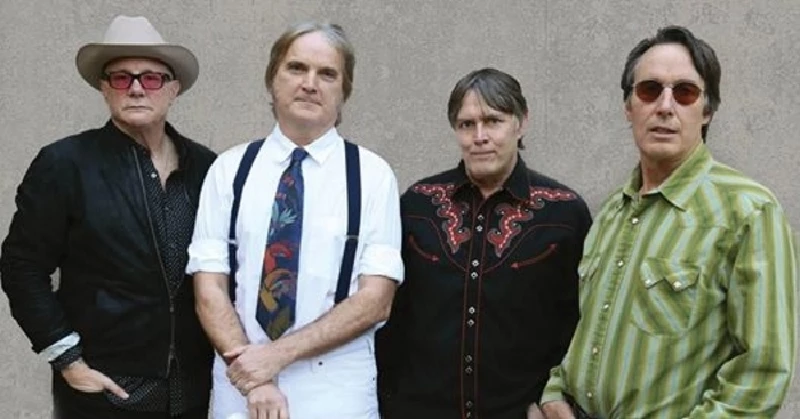
intro
John Clarkson talks to Sid Griffin, the frontman in groundbreaking Americana outfit the Long Ryders, about 'Psychedelic Country Soul', their first studio album in thirty-two years.
The Long Ryders were one of the founders of the alt. country movement, laying the groundwork for a lot of what was to follow in the mid-1990s by being the first act to merge punk with a country and western sound. Formed in late 1981 in Los Angeles, and inspired by the combined influences of Gram Parsons, the Byrds and bands such as the Sex Pistols and the Clash, they were also a part of that city’s influential Paisley Underground scene which featured groups such as the Dream Syndicate, the Bangles and the Rain Parade. The Long Ryders consisted of the Kentucky-born Sid Griffin (guitar, harmonica, autoharp and vocals); Stephen McCarthy (lead guitar, banjo, mandolin, lap steel and vocals); Des Brewer (bass and vocals, who was replaced by Tom Stevens in 1983) and Greg Sowders (drums, percussion). They recorded three albums in their original lifetime, ‘Native Sons’ (Frontier Records, 1984), ‘State of Our Union’ (Island, 1985) and ‘Two Fisted Tales’ (Island, 1987), but met with little commercial success and broke up in 1987 shortly after the latter album’s success. Like many other pioneering musical acts, their originality and importance has been steadily more recognised after their disbandment, and was confirmed in 2016 with the release on Cherry Red Records in 2016 of a four CD box set ‘Final Wild Tales’. It compiled together all three of their studio albums; ’10-5-60’, their 1983 self-released five-song debut EP, and various alternative mixes, live recordings and two previously lost songs. Last year also saw the re-release of both ‘State of Our Union’ and ‘Two Fisted Tales’, in three CD packs and included demos and further live versions. The Long Ryders, who had reunited occasionally over the intervening years, made their reunion more permanent at the time of ‘Final Wild Tales’, and have toured regularly. They released ‘Psychedelic Country Soul’, their first album in 32 years, in February, which was recorded in Los Angeles in the unlikely environment of hip hop star Dr. Dre’s home studio. It naturally moves the Long Ryders’ sound on, containing instantly classic songs such as fiery power pop anthem ‘Molly Somebody’ about those who have got away in life; ‘What the Eagle Sees’, the track which most aligns the band’s roots in punk and country; a poignant cover of Tom Petty’s ‘Walls’ and the epic-toned and harmony-laden eponymous title track. Pennyblackmusic spoke to Sid Griffin, who is now based in London, about ‘Psychedelic Country Soul’. PB: The Long Ryders reformed in 2016 at the time of ‘Final Wild Songs’, and you said then with that album and that tour that you wanted “at a personal level a valedictory lap around the track, a sort of lap of honour for the band.” At what point did it turn into more than that and the idea for this new album first started to be floated? SG: It still is that valedictory lap around the track. I don’t dispute the premise. What happened was that the ‘Final Wild Songs’ CDs sold out. They pressed up something like 10, 000 or 12, 000 of them and they sold out. So, for a four CD box set that is really great these days because hard copies are dying. That was obviously a new audience or an audience that was reminded that we were good back in the original days. We went out and did a lot of shows that year for that album. We played for about a year and then stopped, and the first person to ‘crack’, as I call it, was Stephen McCarthy. Greg Sowders had said, “I wouldn’t mind doing a new song one day,” and I just forgot about it, but Steve just really broke and said, “Look! I am really tired of walking on stage and playing these same old songs.” I originally didn’t want to do it. I said, “This is what our audience wants. They want to hear these old songs." Fast forward to May of 2017, and our last roadie, who became the last bass player that we ever had for our final American tour, a guy called Larry Chatman, works for Dr. Dre now in Los Angeles. He is his number one personal assistant, and the long story short is that for the last thirty years he has been telling me that he had never forgotten how kind the Long Ryders were to him when he was down and out in L.A. We hired him as a roadie and made him the bass player when Tom had to quit to maintain his family. Larry kept saying, “I am going to pay you back. I am going to pay you back,” and I thought when he said that, “Oh, maybe he he will buy us a lovely, slap-up lunch some time.” I knew he was doing very well with Dr. Dre and I thought, “Maybe the greatest thing he could do is he might buy us a guitar,” but what happened was that Larry called up and said out of the blue, “Look! I can pay you guys back and I know how to do it,” and I said, “Okay! Shoot!” and he said, “Dr Dre owns Val Garay’s studio.” He bought Val Garay’s studio in L.A. where they recorded old pop hits like ‘Bette Davis Eyes’ by Kim Carnes. Dre works in the smaller room doing beats. Dre doesn’t really use the big room, so he rents the room out to people like Dave Stewart and Dave Grohl also had the Foo Fighters in there with him for a while when his own studio broke down. It is a really good studio and Larry said, “I will give you a week’s free studio time to pay you back,” and I said, “Wow! You have given us a state-of-the-art studio which would cost £40,000 or £50.000 to hire." We don’t have that kind of money, and no label is going to afford us that kind of money, so we demoed up a bunch of songs and we booked a week in November. We actually had to beg Larry for an extra day because we were not quite done, and so we worked like dogs and fourteen hour days. Other than some overdubs and mixing at our producer Ed Stasium’s house and a handful that Steve McCarthy did in Virginia, the album was done. PB: The Long Ryders have a really strong back catalogue. So often when bands come back after a long absence their new records don’t match their old records. Did you feel a huge pressure to do something which equaled your back catalogue? SG: You only need to look at the reunion records of rock and roll’s past. The Beatles came back with ‘Free as a Bird’ and ‘Real Love’ and The Band got back together with two albums. The Mamas and Papas broke up and their label said, “You owe us an album,” so two or three years down the line they came back and did an album called ‘People Like Us’. None of those albums were near the best work those bands had done, and that was really worrying to me. Bands reunite fairly frequently and, while live it is enjoyable, they try and make a new record and it is mediocre. I thought, “Has our time passed?” We all talked about it and I put my foot down and said, “If this record isn’t any good we just don’t put it out. We haven’t lost any money to speak of." Yes, we had to pay Ed Stasium. We paid his fee. We had to pay for an engineer, and we had to pay for transport to get us out to L.A. and for sandwiches and dinner, but at the end of the day we slept on friend’s sofas when we were in L.A., so we could eat the loss. I was adamant that we were not putting out a bad record. If we had just three or four good songs, then we could put them out an EP or on Spotify and the rest we could, burn in hell. I was just stunned how well things turned out. I was really pleased because you just never know. I knew that the songs we demoed were good but that doesn’t mean it is going to happen. When we got to L.A. because we all l now live in four different parts of the world and got through the rehearsals, I thought, “This is going to work.” And it did and I am very pleased. PB: We spoke to Steve Wynn when he reformed the Dream Syndicate and they put out 'How Did I Find Myself Here?', their first album in thirty years, in 2017. He said then, “We just wanted to see what it would be like in the Dream Syndicate in 2017 and to make a record.” Was that part of it as well, just to get back together with the other members of the band and to see what it was like to make a record thirty years on? SG: No, that was Steve Wynn’s tack. It is not ours. It was just we had free studio time. The Long Ryders were an overlooked but very important link in the musical chain. As one critic said, “The Long Ryders were the perfectly right band but at the perfectly wrong time.” If we had come out five years later or seven years earlier, we would have been huge. Particularly in England there were all these synth bands like Kajagoogoo and Haircut 100 and Heaven 17. I have got nothing against them but I don’t own a single record by any of them. I have got nothing against those guys. I wish them all well, but i don’t own any of that stuff. I don’t even like it when I hear them on the radio. We just wanted to see if we could make a record. It was like sending up a flare. You have a flare gun. You point it in the sky. You shoot it up there and people come and look at it. Our distress signal was basically saying, “We feel that we were an important band that kept the flag flying for Americana and electric guitars and rock and roll when no one else was doing it. So, that’s why we made a record. We wanted to announce, “Look, we were an important link in the chain. Please notice us!” I don’t think this new record is going to change my life dramatically. I don’t expect it to outsell ‘Thriller’ or the Eagles ‘Greatest Hits’, but everybody that has heard it loves it so far and says that it sounds like the Long Ryders. I must say also that I am thrilled that there are some new songs to play live. It is great to have some new blood. PB: 'Molly Somebody’ is about someone who was once important but has got lost along the way. Who inspired that one? SG: There is this band called Translator. I don’t think that they have done that well over here but they have released five albums, including four albums on CBS, and they have even had a hit in America with a song called 'Everything I'm Not'. Steve Barton from that band is a friend of mine, and one time we were talking on the phone - I was in London and he was in San Francisco - and he was telling me about this girl that he knew but he had lost track of her and found out recently that she had died some time ago, and I said, “Yeah, I know a lot of people like that." There was this girl I went to elementary school with, and I was introduced to a guy called Eddie Watts who was from my home town in Kentucky, and I said, “Would you be Molly Watts’ sister?” and he said, “No. Molly Watts was my cousin and she is dead.” It was such a shock. She died in her 40's. She didn’t even make it this long. So, I was telling Steve about that and soon as I said that he said, “Who was that? Molly Somebody?” And as soon as I heard him say “Molly Somebody” I thought that would be a good title - ‘Molly Somebody’. It is not about a specific person but it is about how there are a lot of lost souls out there. Case in point! There was a girl in Louisiana, and she and her sister loved the Long Ryders. As the 1980's ended we all had to grow up a little bit. She became a businesswoman, but partied a little much and the poor thing died. She was a wonderful, vibrant woman back and a Molly Somebody. She was one of those people who gets lost in the machinations of modern life. 'Molly Somebody’ is about not a particular person, but one of those lost souls out there who never seems to come to terms with modern life. PB: You also covered Tom Petty’s ‘Walls’. Was he an influence on the Long Ryders? SG: Not so much an influence. He was almost a contemporary of ours, but, of course, much more successful. I saw for what was my first time Petty play the Whiskey A Go Go in L.A. in September ’77, a week or ten days before I also saw for the first time Elvis Costello play there. Petty was just great. He paid at least once to see the Long Ryders. He wasn’t on the guest list. He paid. In fact now I think about it, Elvis Costello paid also to see us and he was on our record label over here, so both guys did that and we thought, “Wow! How cool is that!” And I saw Petty every once in a while. The music business in Hollywood isn’t as big as you think. I remember bumping into Petty, for example, at a music store called Moby Disc in a L.A. suburb, and he recognised me and he was just a really cool guy. He wasn’t so much of an influence as just a sweet, nice guy. Yes, he liked twelve string instruments and so did we, but it was more than that. If you met John Lennon or Bob Marley or – I’ll pick someone who is alive -Bruce Springsteen or Lenny Kravitz, wouldn’t it be great to meet your hero and they were just a nice guy? That was why we did the song, more than any musical influence. PB: Why did you choose that particular song? SG: Greg, who orks in music publishing, and I were talking about it, and I went, “I want to pick a song, but let’s pick a song that isn’t a big hit,” He had had huge hits like ‘Free Fallin’ and 'I Won’t Back down’, and ‘American Girl’ wasn’t a hit but that was a famous tune. We thought that we would pick what is called a ‘deep cut’, so we picked ‘Walls’ and thought we were being clever. Anyway, to cut a long story short, we recorded it, and everyone was congratulating themselves, and then we found some indie band in America had recorded it as a tribute to Tom Petty, and now I have found that on his next to last album the late, great Glen Campbell had also recorded a version of ‘Walls’. I thought that we were being clever and unique and original in picking a song out of his back catalogue, but at least two other acts had beaten us to it. PB: The destruction of the planet seems to be a major theme on this record. ‘Where the Eagle Sees’ touches on that as does the title track. Is this a massive issue with you? SG: Yes, we are in a world where the United States has been leading the chart on climate change and 82% of American scientists polled said that climate change is a/real and b/man made, and, of course, the world going with the 18%, some of whom were paid by the oil industry, the fossil fuel industry. There is an undercurrent of ecology and Green Party politics on the record. I read just yesterday that yet another whale was beached somewhere, and this one had not just plastic in it but a pair of shoes and a full shell suit in it. There is a real problem, and it is something that we wanted to highlight through the record. PB: Last two questions. Your bluegrass project the Coal Porters broke up after seventeen years shortly after the Long Ryders got back together. Why was that? SG: Several people have asked me in the spate of interviews that I have been doing to promote this record if it was because the Long Ryders had got back together, and the answer is no. The Coal Porters had really run its time. After seventeen years the guys just didn’t care anymore, and I knew that we were going to have to stop being a band. It was proved to me because when we stopped being the Coal Porters no one protested. Not one member of the band said, “Oh, this is a mistake,” and tried to talk me out of it. Seventeen years is a long time and, to be honest, the last two years the air was out of the balloon, thee gas was out of the tank and we were out of petrol. PB: Final question! You are doing a two week tour of Europe in April. What are the Long Ryders’ plans after that? SG: We are not sure if we want to make another record. We have already talked about if we want to make another record, and no one is against it and no one is 100% for it. If this record is successful, then I think we will definitely make another one. If this record isn’t well received, then we might make an odds and sods collection of outtakes and rarities, but it depends on this record and if it is embraced by the public and well received. PB: Thank you.
Band Links:-
http://www.sidgriffin.com/long-ryders/https://www.facebook.com/The-Long-Ryders-206678626039432/
https://twitter.com/longryders
https://en.wikipedia.org/wiki/The_Long_Ryders
Picture Gallery:-
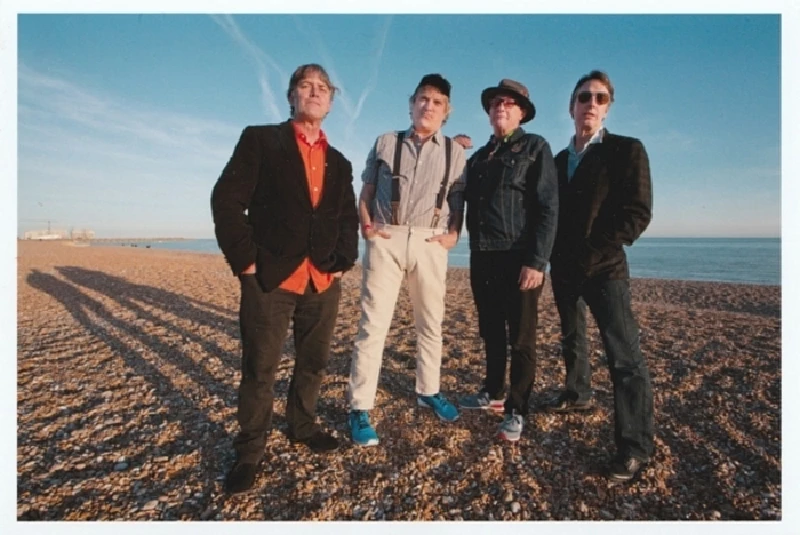
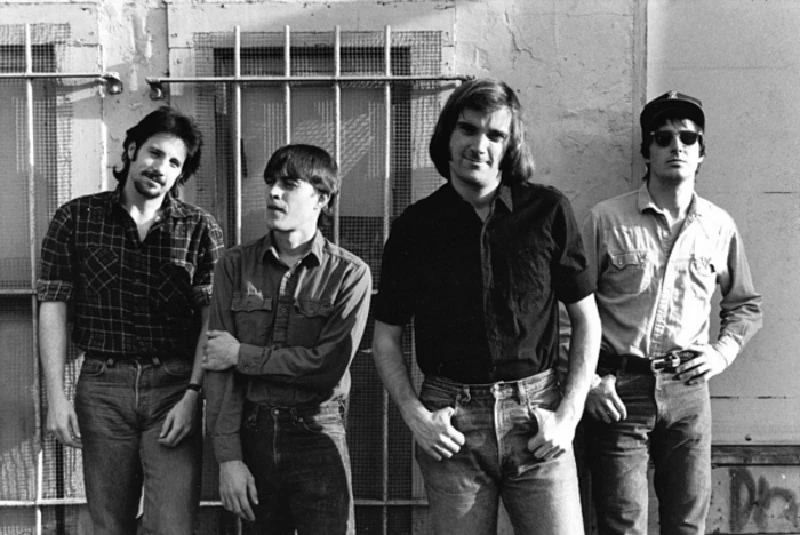
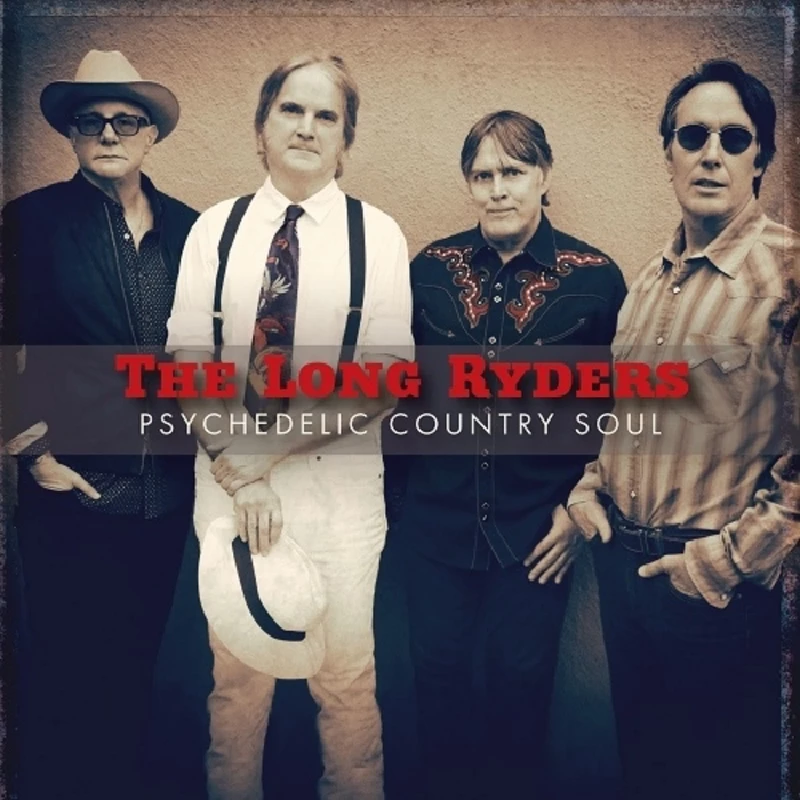
interviews |
|
Interview (2016) |
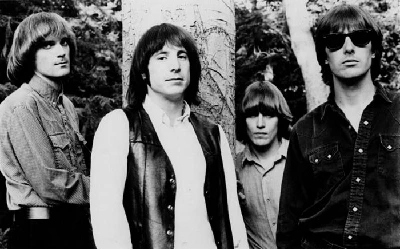
|
| John Clarkson speaks to Sid Griffin, the front man with groundbreaking 80s band the Long Ryders, about their influence on the alt.country/Americana movement and 'Final Wild Songs', a new four CD box set |
photography |
|
Photoscapes (2023) |

|
| Philamonjaro photographs pioneering alt.country group The Long Ryders at The Loco Club in Valencia in Spain. |
most viewed articles
current edition
Carl Ewens - David Bowie 1964 to 1982 On Track: Every Album, Every SongArmory Show - Interview with Richard Jobson
Colin Blunstone - Thalia Hall, Chicago, 16/7/2025
Visor Fest - Valencia, Spain, 26/9/2025...27/9/2025
John McKay - Interview
Bathers - Photoscapes 1
Loft - Interview
Billie Eilish - O2 Arena, London, 10/7/2025
Robert Forster - Interview
Sir Tim Rice - Interview
previous editions
Heavenly - P.U.N.K. Girl EPManic Street Preachers - (Gig of a Lifetime) Millennium Stadium, Cardiff, December 1999
Beautiful South - Ten Songs That Made Me Love...
Oasis - Oasis, Earl's Court, London, 1995
Pixies - Ten Songs That Made Me Love...
Prolapse - Interview
Boomtown Rats - Ten Songs That Made Me Love....
Trudie Myerscough-Harris - Interview
Coldplay - Wembley Arena. London, 16/8/2022
Peter Perrett - In Dreams Begin Responsibilities Interview Part One
most viewed reviews
current edition
Amy Macdonald - Is This What You've Been Waiting For?Sick Man of Europe - The Sick Man of Europe
Phew, Erika Kobayashi,, Dieter Moebius - Radium Girls
Lucy Spraggan - Other Sides of the Moon
Davey Woodward - Mumbo in the Jumbo
Alice Cooper - The Revenge of Alice Cooper
Bush - I Beat Loneliness
Suzanne Vega - Flying With Angels
Blueboy - 2
Cynthia Erivo - I Forgive You
Pennyblackmusic Regular Contributors
Adrian Janes
Amanda J. Window
Andrew Twambley
Anthony Dhanendran
Benjamin Howarth
Cila Warncke
Daniel Cressey
Darren Aston
Dastardly
Dave Goodwin
Denzil Watson
Dominic B. Simpson
Eoghan Lyng
Fiona Hutchings
Harry Sherriff
Helen Tipping
Jamie Rowland
John Clarkson
Julie Cruickshank
Kimberly Bright
Lisa Torem
Maarten Schiethart